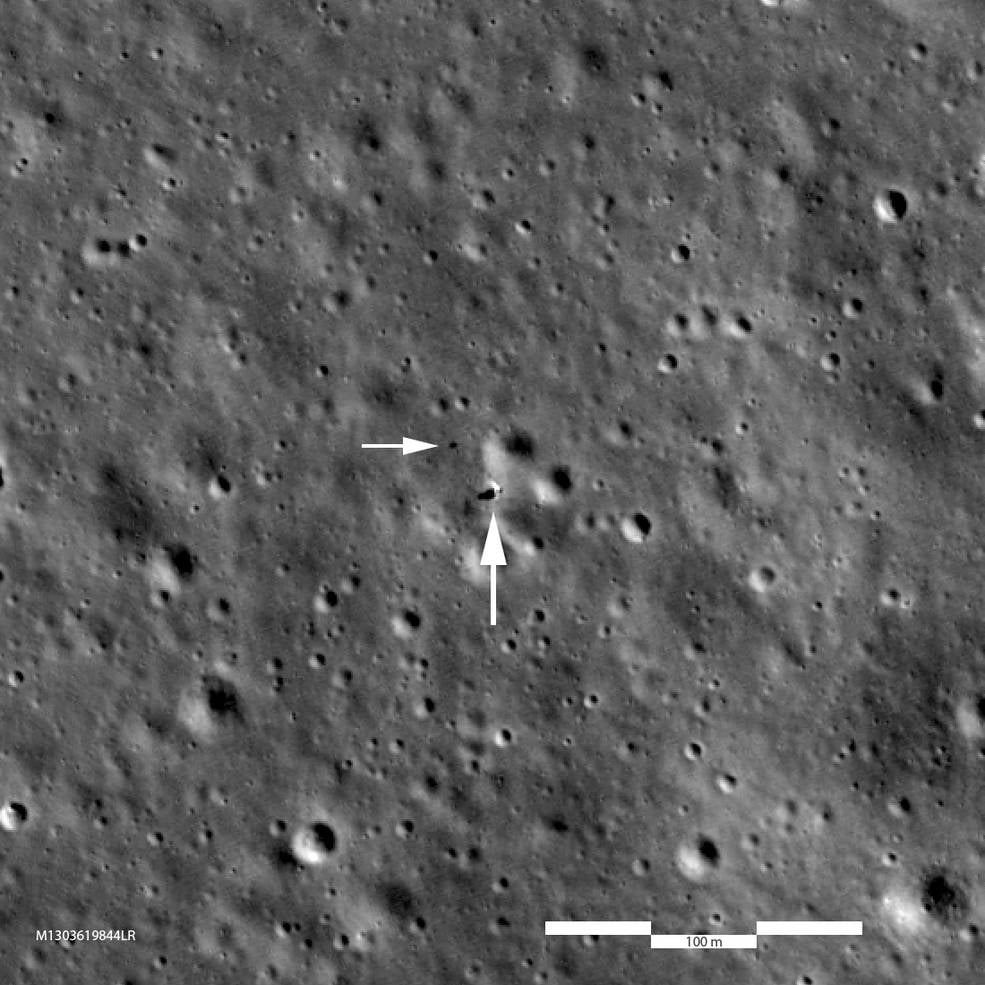The US is keeping an eye on China’s lunar rover
China’s latest robotic expedition to the lunar surface is being watched by an American spacecraft orbiting the moon.


China’s latest robotic expedition to the lunar surface is being watched by an American spacecraft orbiting the moon.
NASA has just released the image, from Feb. 1. It was created while its Lunar Reconnaissance Orbiter was 82 kilometers (50 miles) above where China’s Chang’e 4 expedition has landed and deployed a small rover, Yutu-2.
That’s as close as it can reasonably get over this particular spot. For a sense of scale, Yutu-2 is a good 29 meters away from the lander in the image:

The two countries discussed using the orbiter’s cameras to scope out the landing site ahead of time, edging around the official US ban on direct cooperation between their space agencies. But NASA administrator Jim Bridenstine told Quartz that the US and China are sharing scientific data gathered by their respective lunar expeditions, to further the cause of science.
This mission, China’s fourth trip to the moon, is aimed at gathering data in the southern polar region, where the presence of water ice is creating a renewed interest in robotic and perhaps human expeditions to the Earth’s nearest neighbor in space. The US spacecraft that took these new images was part of the global team that helped discover that water and has been keeping an eye on the moon since it arrived in 2009.
Chang’e 4 became the first robotic probe to land on the far side of the moon when it arrived on Jan. 3. NASA researchers expect it to yield important insight about the relatively unexplored geology there. After deploying its rover, the lander has performed an experiment in space agriculture which ended, familiarly for amateur horticulturists, in death.
The US hopes to send its own robotic explorers back to the lunar surface through a new program that will hire private companies to build spacecraft to carry sensors developed by NASA scientists. Thomas Zurbuchen, who leads the space agency’s science directorate, said this week that he expects the first mission to depart this year.
In the meantime now, if the aerial shots have you craving a closer look, China has released this video of the rover heading out onto the lunar surface for the first time, captured by the lander: